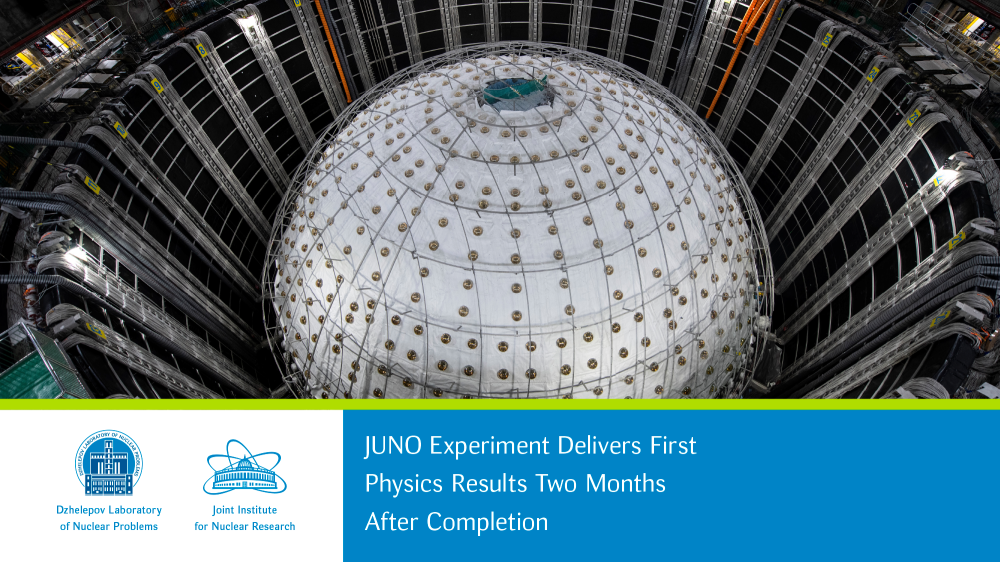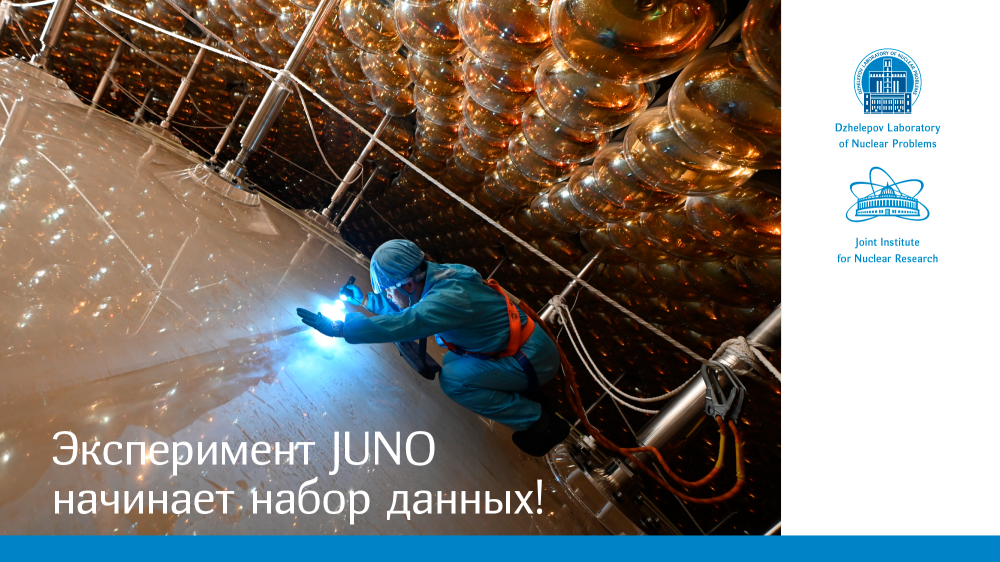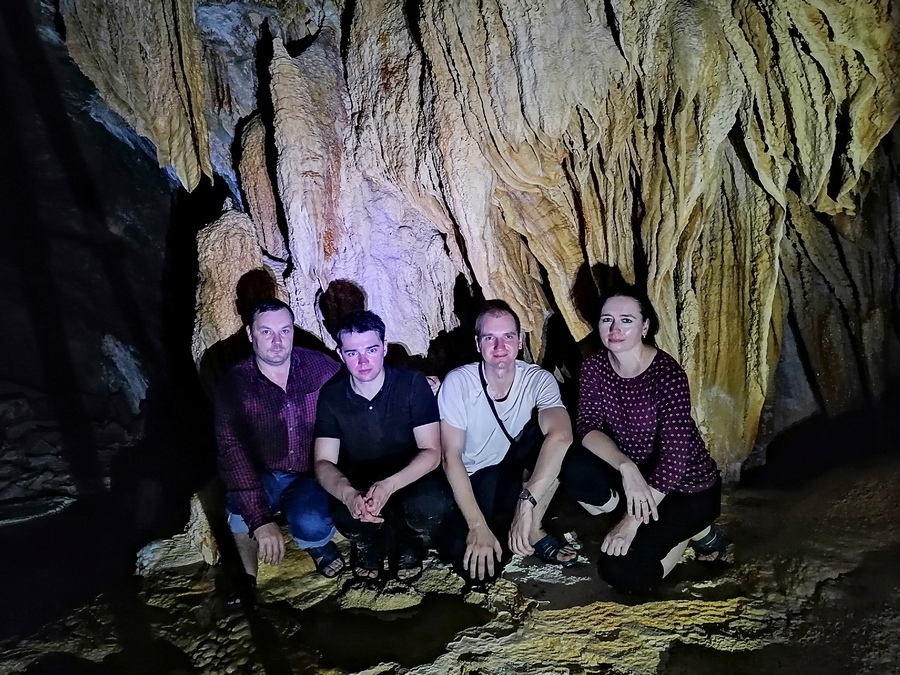First Results of the Baikal-GVD Neutrino Experiment Searching for Astrophysical Neutrinos Published
The article of the Baikal-GVD collaboration has been published in the authoritative science journal Physical Review D. The first results of the search for astrophysical neutrinos based on the data accumulated by Baikal-GVD, the Baikal Deep Underwater Neutrino Telescope, were announced. The astrophysical neutrino flux earlier detected by the Antarctic Neutrino Telescope IceCube was confirmed. The Baikal Neutrino Telescope is one of the Russian projects at the mega science level. The Baikal-GVD Telescope was ceremonially launched in March 2021 with the participation of the Minister of Higher Education and Science of the Russian Federation Valery Falkov.

In this article, the Baikal-GVD collaboration presented the results of measuring the cosmic diffuse neutrino flux. The data from the last four years were analyzed. A total of 25 candidate events of astrophysical neutrinos were extracted. Their number and energy distribution are close to those expected from the diffuse flux detected in the IceCube experiment. The scientific significance of this result is that the existence of cosmic neutrinos is confirmed and the parameters of the neutrino flux of two different experiments coincide within the statistical and systematic uncertainties.
The Baikal-GVD Neutrino Telescope is the implementation of the idea put forward by the remarkable Soviet physicist, academician Moisey Aleksandrovich Markov in 1960. He proposed to detect neutrinos, “elusive” particles, in large water volumes of natural reservoirs where light detectors, photomultipliers, will be placed at a certain distance from each other.
The neutrino is a unique elementary particle without charge and with a very small mass. Since it very weakly interacts with matter, special conditions are needed to cause its interaction with another particle. Processes with huge energy release occur somewhere in outer space, neutrinos are produced, fly through the Universe, and do not interact with anything. When physicists detect neutrinos on Earth, they can determine the direction of their arrival, the energy they had when produced and their type – an electron, muon or tau-neutrino.
Neutrino telescopes in natural environments are actively used today for detection and investigation of ultrahigh-energy neutrino fluxes from astrophysical sources. The data allow physicists to study cosmic processes with huge energy release, features of evolution of galaxies and formation of supermassive black holes, and also particle acceleration mechanisms.
In 1980, the Laboratory of High-Energy Neutrino Astrophysics was established at the Institute for Nuclear Research of the Russian Academy of Sciences (INR RAS) under the leadership of Grigory Vladimirovich Domogatsky, a corresponding member of RAS. Its objective was constructing the neutrino telescope in Lake Baikal and conducting research with it. At present, along with scientists from INR RAS, physicists from the Joint Institute for Nuclear Research (JINR, Dubna), Irkutsk State University (ISU) and other Russian and foreign institutions are taking an active part in research at Baikal.
Over the last 40 years, several neutrino telescopes have been constructed worldwide. These were first-generation telescopes NT-200 in Lake Baikal, AMANDA at the South Pole (successor of the DUMAND project from the year 1976) and ANTARES in the Mediterranean Sea. These facilities allowed developing and implementing the technique of detecting neutrinos in natural environments and approaching closely the construction of cubic-kilometer telescopes.
There are two projects on neutrino telescope construction in the Northern Hemisphere: Baikal-GVD in Lake Baikal (3000 optical modules) and KM3NeT/ARCA in the Mediterranean Sea (378 optical modules).
The Baikal Neutrino Telescope is a unique scientific facility located 3.6 km offshore at a depth of 1300 m. The Baikal-GVD is an effective tool of multimessenger astronomy for solving problems of neutrino astrophysics. The facility contains 10 clusters with 8 vertical strings in each, and every string holds 36 optical modules. The optical system detects Cherenkov light from muons and high-energy charged-particle cascades produced in neutrino interactions.
In 2011, the IceCube detector was launched at the South Pole. About five thousand optical modules with sensitive photomultipliers inside were placed in the ice at a depth of above two thousand meters.
In 2013, IceCube announced for the first time that it detected a total flux of cosmic neutrinos from many sources, the so-called diffuse flux. This significant result for the development of neutrino astronomy and astrophysics had to be confirmed by other experiments. This was the first-priority task for the neutrino telescopes in the Northern Hemisphere, Baikal-GVD and KM3NeT/ARCA.
“The detection of the natural flux of high-energy astrophysical neutrinos by the Antarctic detector IceCube is now proved by the results obtained by the Baikal-GVD Neutrino Telescope in the Northern Hemisphere. The operation of these two detectors enables the search for high-energy neutrino sources across the entire celestial sphere and begins the neutrino sky mapping,” remarked Grigory Domogatsky, the corresponding member of RAS, the head of the Laboratory of High-Energy Neutrino Astrophysics, the head of the Baikal-GVD collaboration.
Neutrino telescope deployment continues. Annually, from mid-February to mid-April, expeditions are organized to install new clusters. In 2023, scientists plan to add two more clusters to those ten already operating. It is expected that by 2027 Baikal-GVD will reach the effective volume of one cubic kilometre, that of IceCube, and ten cubic kilometres in the distant future.
“Discovery of the extraterrestrial high-energy neutrino flux and its measurement by the experiments at the South Pole and Lake Baikal, which are conducted in different hemispheres and give similar results, ensures us that operation of these facilities will allow investigating cosmic neutrino sources across the entire celestial sphere and ushering in the epoch of neutrino sky mapping,” believes Igor Belolaptikov, the head of the expedition activities on the telescope deployment, a researcher of the Dzhelepov Laboratory of Nuclear Problems of the Joint Institute for Nuclear Research.
Neutrinos are one of the four signals of multimessenger astronomy, a novel field of science, the others being gravitational waves, cosmic rays and electromagnetic radiation. Detection and analysis of signals from different messengers allow completing the picture of physical processes occurred in a remote astrophysical source.
“Both signals, gamma-quanta and high-energy neutrinos, bear the information about the mechanisms of production and acceleration of particles in the source. Gamma-quanta can be produced both in electromagnetic processes with the participation of charged leptons, mainly electrons and positrons, and in hadronic interactions. That is why their detection indicates the overall contributions of lepton and hadronic mechanisms. To separate these contributions using only gamma-ray astronomy is rather difficult. High-energy neutrinos are largely produced during hadronic decays, so neutrino signal detection indicates mainly the hadronic mechanism of acceleration of particles in a source. The joint analysis of data from the telescopes detecting gamma-quanta and neutrinos allows determining contributions of lepton and hadronic mechanisms separately. Moreover, detection of neutrinos from a cosmic source unambiguously indicates that cosmic rays are accelerated in this source. And this is the answer to one of the main questions of natural science, the question about the origin of high-energy cosmic rays,” adds Bair Shaybonov, Candidate of Physics and Mathematics, a senior DLNP researcher.
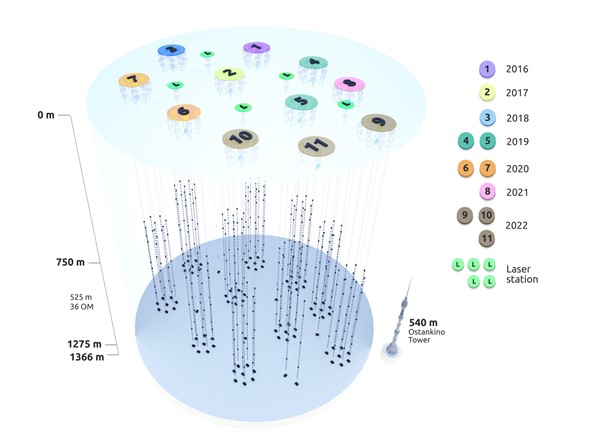
Baikal-GVD Neutrino Telescope Structure | Baikal-GVD collaboration

Photo by Bair Shaybonov
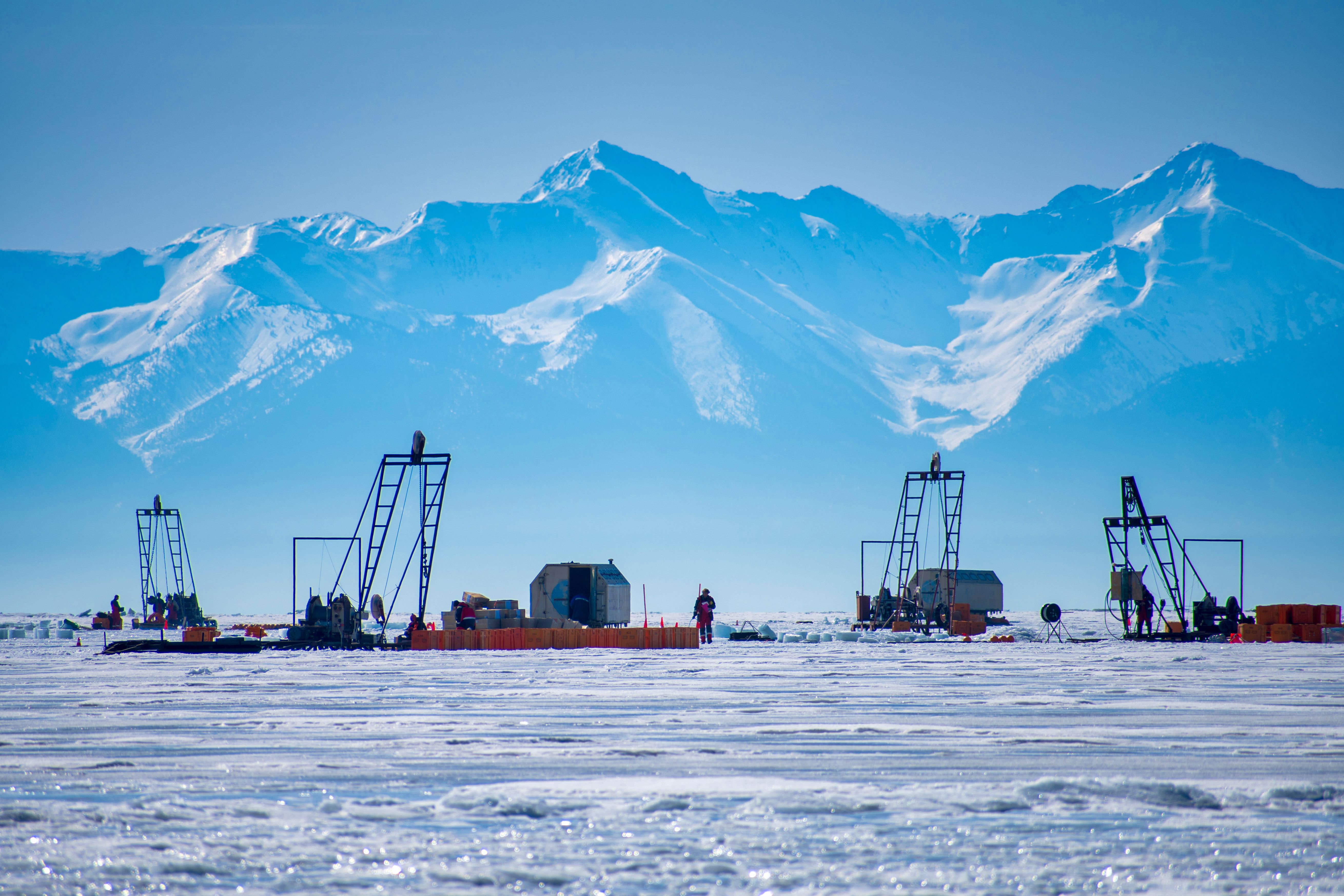
Photo by Bair Shaybonov

Photo by Bair Shaybonov


